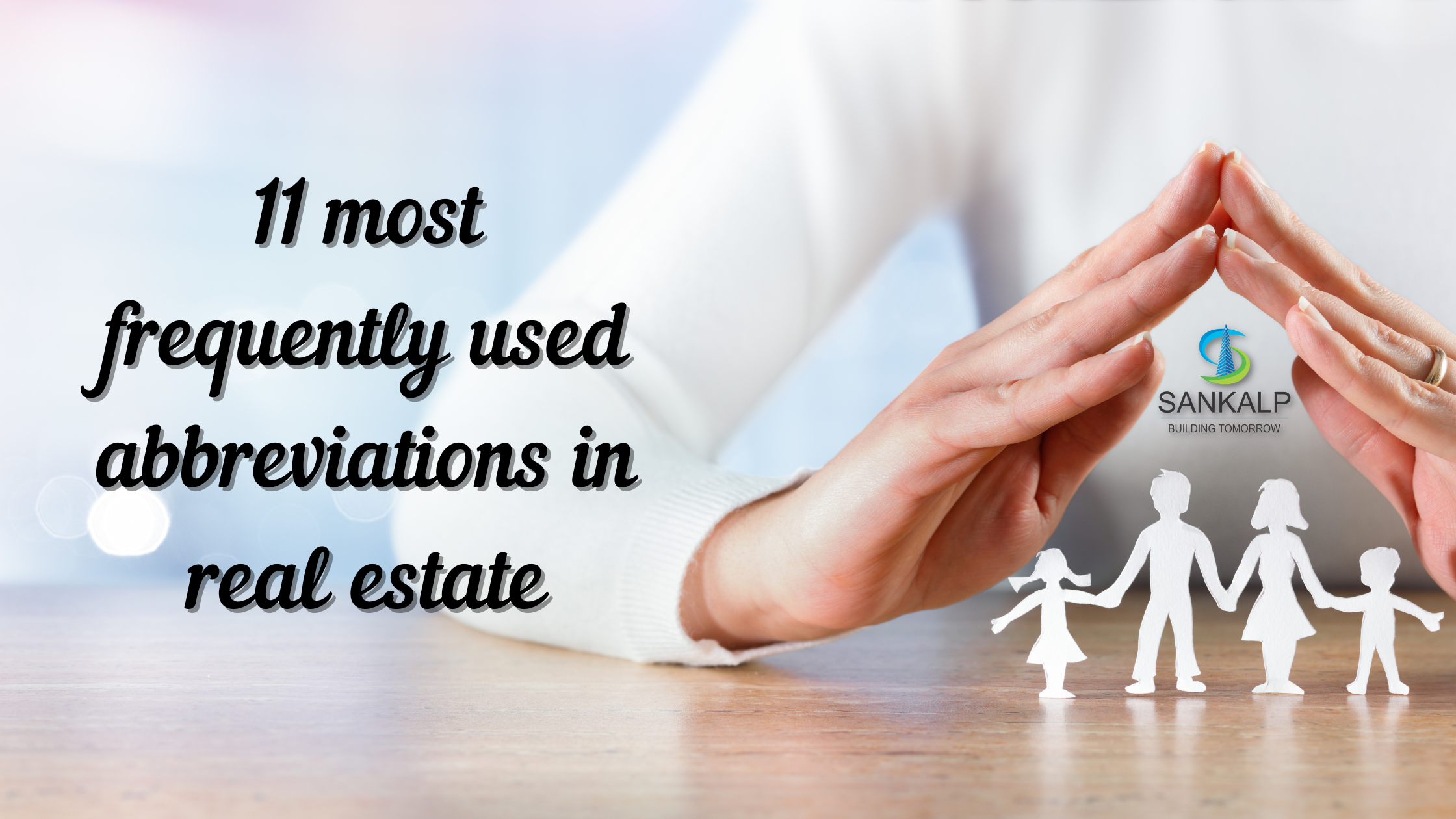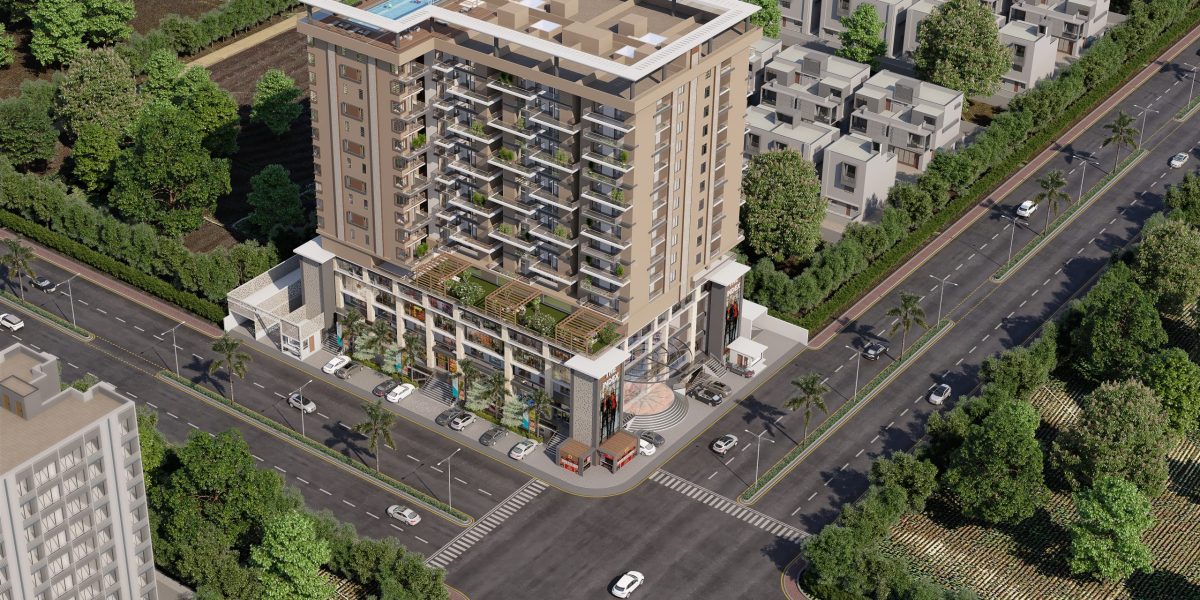Abbreviations are used frequently in every walk of life. However, when it comes to real estate lingo or abbreviations things get tricky as, if you do not know them you might not understand the concept at all. Here are few frequently used abbreviations which might come in handy when you are dealing with a real estate company / personnel.
1. Basic Sale Price (BSP)/ Market Value (MV)
Basic Selling Price (BSP) or Market Value (MV) in the realty sector is the base rate per sq. ft. at which a developer or owner advertises the property. It excludes other additional or hidden charges including Goods and Services Tax (GST), taxes, preferential location charges, and other maintenance fees.
2. Preferential Location Charge (PLC)
Preferential Location Charge (PLC) is an additional cost that a homebuyer needs to pay for attaining a particular unit which comes with additional location advantage in the project. It has been commonly observed that buyers prefer a unit which either faces the main road or the lush-green garden. Some buyers even want to live on a specific floor. To secure such housing units, buyers have to pay the PLC, which is calculated on the super built-up area of the concerned unit. It is charged per sq ft and depends on various factors, including the project type, property location, climatic conditions, construction quality, and the choice of the floor.
3. Loan-to-Value (LTV)
The loan-to-value (LTV) is the allowed ratio of the home loan to the total value of the property by the housing finance companies. Usually, the loan-to-value ranges from 75 percent to 90 percent of the overall property cost. A higher LTV means a bigger loan amount and lesser down payment. For instance, if you apply for a home loan for a property worth Rs 1 crore, the maximum LTV would be around Rs 90 lakh.
The Reserve Bank of India (RBI) has specified up to 90 percent LTV for the loan amount up to Rs 30 lakh. For any loan amount between Rs 30 lakh and Rs 75 lakh, LTV would be 80 percent. For home loans exceeding Rs 75 lakh, an applicant can get a maximum LTV of 75 percent. Several factors are considered while deducing the LTV, including the age of the applicant, credit score and other liabilities of the applicant.
4. Power of Attorney (POA)
Power of Attorney (POA) is a document giving legal right to the attorney or agent to oversee and manage the owner’s property when the owner is physically unavailable for making the deal. This can include being hospitalized, dead, or out of the country. Usually, NRIs are found to have power of attorney, allowing a person or an agent to make the selling decision. Such agreements are made for a specific time frame.
5. Completion Certificate (CC)
A completion Certificate (CC) is a legal document that a developer attains from the local municipal body as a proof of completion of the construction work as per the sanctioned building plan. While signing the deal, make sure that your builder provides you with all the required documents including the completion certificate. It is a mandatory certificate that a builder needs to obtain even if the project has all the requisite connections, including water supply and electricity. In the absence of the certificate, the building stands illegal and the civic authority holds the right to disconnect the basic civic connections anytime.
6. Occupancy Certificate (OC)
An Occupancy Certificate (OC) is a legal document that a local governing body issues to a project, certifying that the building or a unit is in compliance with the building norms and is in a suitable condition for occupancy. The procedure and issuance of the certificate, however, varies from jurisdiction to jurisdiction. The occupancy certificate is proof that the property or building is in livable condition.
7. Floor Area Ratio (FAR)
Floor Area Ratio (FAR) is the proportion of a building’s gross floor area to the size of the land parcel upon which the construction is done. In India, FAR norms differ from city to city. It falls in between 1.3 and 3.25. The FAR of a building governs its height and the number of floors that can be developed on a piece of land, thus impacting its land value.
8. Equal Monthly Installment (EMI)
One of the most frequently used abbreviations is Indian real estate is EMI. An Equal Monthly Installment (EMI) is the amount that one needs to pay every month to repay the loan to the lending bank. Several factors affect the home loan EMI. Some of the basic factors include applicant’s salary, profession, age, qualifications, number of dependents, assets, liabilities, financial history, and loan tenure.
9. CIBIL
Credit Information Bureau (India) Limited or CIBIL is India’s credit information company keeping a record of all credit-related activity of individuals and companies including home loans. An applicant must check his/her CIBIL score before applying for a home loan. A higher CIBIL score will make your lending procedure quick and hassle free. A credit score or summary is scrutinized by banks and other financial institutions to evaluate one’s credit worthiness for making the final lending decision.
10. No Objection Certificate (NOC)
A No Objection Certificate (NOC) is a crucial legal paper required while buying a property. Such legal documents are issued to certify that a unit does not violate the terms and conditions of an organization, agency or institute. While developing a housing unit, applicants are mandated to obtain a NOC from the concerned government authorities to avoid any legal hardship. If a housing unit violates any of the building bylaws, a NOC will not be issued by any urban developmental authority or other concerned bodies. The local authority issues NOC after stringent, transparent and fair inspections.
11. Return on Investment (ROI)
Return on Investment (ROI) is a metric commonly used to evaluate the profit you make on your real estate investment. The ROI is calculated after evaluating the investment cost. To calculate ROI, the profit made from an investment is divided by the cost of the investment.
ROI = (Gain from real estate investment – Cost incurred while investing in the real estate activity) / Cost of Investment. Another very frequently used abbreviations.
Liked this post? Please care to follow us on Face book, Instagram and Subscribe to our YouTube Channel for interesting real estate info and home décor tips.









